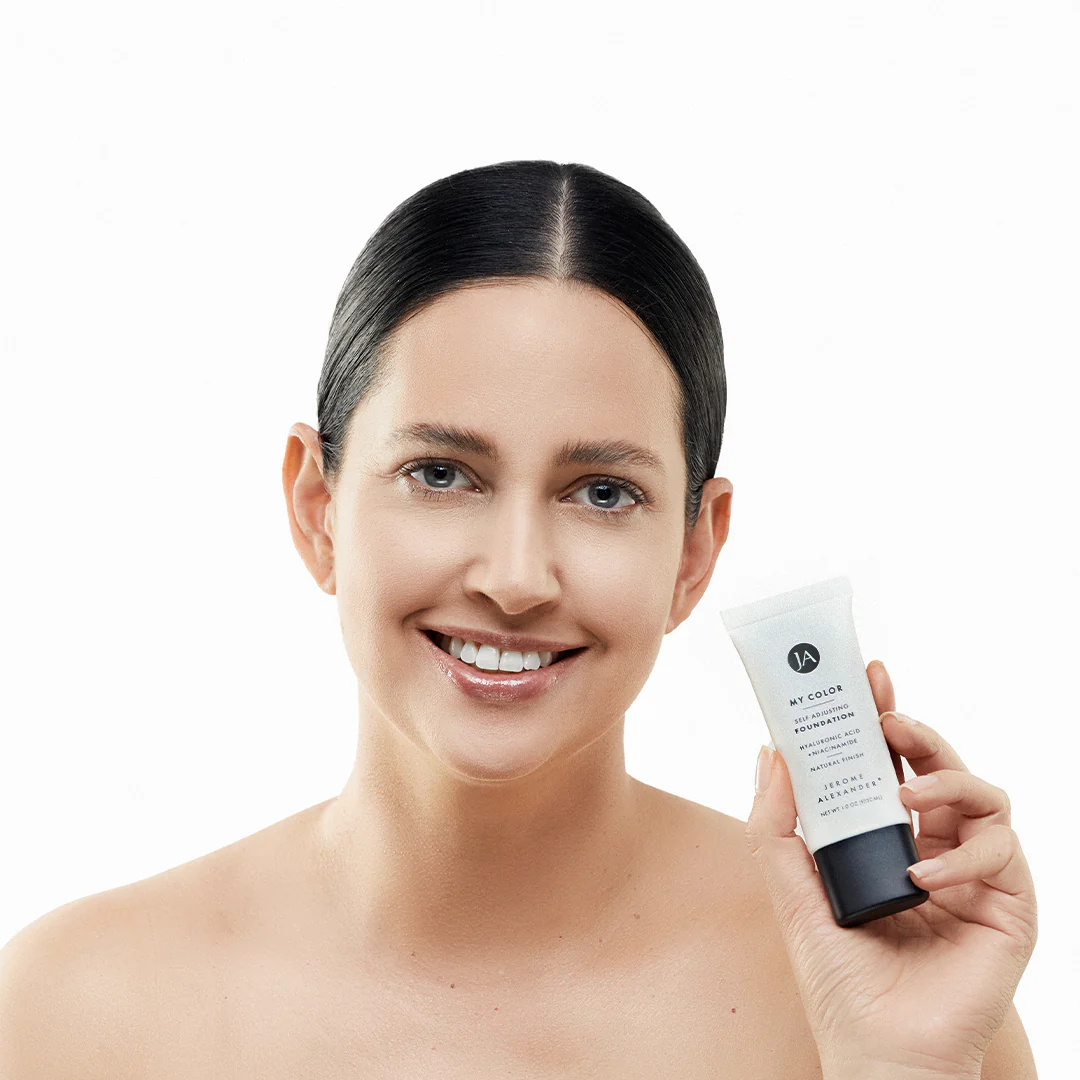
Solving Cakey Foundation Mysteries
The Root Causes of Cakey Foundation
Encountering the issue of a cakey foundation can be puzzling. Here, we explore why your foundation might not have the desired texture.
Preparation Missteps
A key to avoiding cakey makeup is good skin preparation. Without a suitable primer, your foundation lacks a smooth canvas. It’s important to apply primer before foundation to fill in fine lines and pores.
Inadequate Skin Care
Regular exfoliation ensures your skin doesn’t accumulate dead cells that cause flakiness. This step is crucial for a seamless foundation application. Well-exfoliated skin accepts foundation better, resulting in less cakiness.
Incorrect Application
How you apply your foundation is as important as the product itself. Using the wrong tools or technique can leave it looking thick. Ensure you use the right brushes or sponges for a more even, natural finish.
Product Overload
Applying too much foundation is a common mistake. A lighter hand yields a more natural look. Start with a small amount and build coverage as needed.
These are just the beginning steps to improving your foundation application. Understanding these aspects can dramatically change your makeup game.

Choosing the Right Primer for a Smooth Base
Choosing a primer is key to preventing a cakey foundation appearance. A primer creates a smooth, even canvas for your foundation. Here’s how to select the right one:
- Identify Your Skin Type: Oily, dry, combination, or sensitive skin types need different primers.
- Look for Skin Benefits: Some primers offer hydration, minimize pores or control shine.
- Consider the Foundation Compatibility: Ensure your primer works well with your foundation type.
- Test for Comfort: The primer should feel light and comfortable on your skin.
A good primer fills fine lines and pores, making foundation application smoother. It’s a crucial step not to skip for a flawless finish. Remember to allow the primer to set before applying foundation. This extra minute makes a big difference.
Exfoliation: The Key to Preventing Flaky Makeup
Removing dead skin cells through exfoliation is crucial for a smooth foundation application. This process clears the way for foundation to lay flat and even on the skin, preventing that dreaded flakiness. Here is why exfoliation should be a non-negotiable step in your beauty regimen:
- Unclogs Pores: Dead skin can clog pores, which disrupts foundation consistency.
- Smooth Texture: Exfoliation reveals a smoother skin surface. Foundation glides on with ease afterward.
- Enhanced Absorption: Skincare products penetrate better on exfoliated skin, improving foundation adherence.
- Consistent Color: It helps avoid uneven skin tone, resulting in consistent foundation color.
Incorporate gentle exfoliation into your routine about two to three times a week. Those with sensitive skin should opt for milder exfoliants to avoid irritation. Remember, harsh scrubbing can do more harm than good, so be gentle with your skin. For the best results, moisturize well after exfoliating to keep the skin hydrated and primed for makeup application. When your base is prepped correctly, the question of ‘why is my foundation cakey’ will arise far less frequently, giving you a flawless start to your makeup routine.

The Impact of Using Too Much Product
Applying too much foundation is a sure way to end up with a cakey look. This common misstep goes against the aim for a natural finish. Here’s the impact of overdoing it and how to avoid it:
- Heavy Appearance: Foundation should enhance, not mask, your skin. Too much product makes skin look heavy.
- Creasing and Cracking: Excess makeup settles into fine lines and wrinkles, leading to creasing.
- Wastes Product: You use up foundation faster when you apply more than needed.
- Difficult to Blend: Overloaded foundation is hard to spread evenly. This can cause patchiness.
- Trapped Dirt: Thick layers can trap dirt and oil, leading to clogged pores and breakouts.
Start with a small amount of foundation and build coverage gradually. This way, you control the amount you’re using. Using a damp sponge helps spread the product thinly and evenly. Remember, less is often more when it comes to foundation.
Ideal Formulas for Different Skin Types
Choosing the right foundation formula is crucial for your skin type. Each type demands a specific kind of foundation. Here’s how to find the one that suits your skin best:
- For Dry Skin: Seek hydrating formulas. Foundations with ingredients like hyaluronic acid can keep skin moist.
- For Oily Skin: Go for matte finishes. They help control shine throughout the day.
- For Combination Skin: Consider a balanced formula that mattifies the T-zone but hydrates dry areas.
- For Sensitive Skin: Look for hypoallergenic and fragrance-free options to prevent irritation.
Selecting the ideal foundation formula not only helps with a smoother application but also improves the longevity of your makeup. It reduces the chance of cakey makeup. It is crucial to know your skin type first. Then, match it with a foundation designed to work with that skin’s behavior. This way you can say goodbye to the question ‘why is my foundation cakey’. Instead, you’ll enjoy a flawless and comfortable wear all day.

Setting Your Foundation: Techniques and Products
After selecting the right formula and perfectly applying your foundation, setting it is the final, crucial step. Setting your foundation helps to lock in your makeup, prevent creasing, and maintain a fresh look throughout the day. Below are simple techniques and product recommendations to ensure your foundation stays put and looks flawless:
- Use a Setting Powder: A light dusting of translucent setting powder helps absorb excess oil and minimize shine. Apply it with a fluffy brush for a lightweight, even layer.
- Try a Setting Spray: A quick spritz of setting spray can help keep your makeup in place. It acts as a protective topcoat for your face.
- Consider the Order: Always apply powder after liquid or cream products to prevent caking. Powder on top, never underneath.
- Blotting Papers: For oily skin, blotting papers throughout the day can prevent buildup that leads to cakey makeup.
- Avoid Touching Your Face: This transfers oils from your hands to your face, which can also affect your foundation’s longevity.
By mastering these techniques and using the right products, you will reduce the ‘why is my foundation cakey’ dilemma to a minimum. The key is to start light and build as necessary, ensuring your foundation remains natural and long-lasting.
Today’s beauty culture has shifted, and foundation use has changed with it. Gone are the days where heavy makeup was the norm. Now, embracing natural skin is not only accepted but celebrated. Yet, for many, foundation remains a staple in their beauty routine. It’s about achieving a natural look without feeling the need to hide.
Embracing your skin’s natural texture is key. This means using foundation to enhance rather than mask your face. Start with a minimal amount and only add where necessary. Look for lighter formulas that offer a breathable coverage. Foundation should not be a mask but a tool to even out skin tone and conceal minor imperfections.
The trend towards skin-first beauty means taking care of your skin is crucial. A good skincare regimen leads to better foundation application. Hydration and protection are your allies. Remember, healthy skin makes for a better canvas.
Foundation today should offer more than coverage. It should include skin care benefits like SPF, antioxidants, or moisturizing properties. Many brands cater to this demand, offering foundations that improve skin over time.
The key takeaway is simple: less is often more. The question ‘why is my foundation cakey’ arises when we forget this. Modern beauty standards favor a more natural approach. It’s all about letting your real skin shine through.
If you use foundation, make it work for you. Match it to your lifestyle, skin type, and personal preference. Today’s culture invites you to customize your makeup routine to suit you, not the other way around. By following this philosophy, you can enjoy a flawless finish that feels as good as it looks.

Tips for a Natural, Flawless Foundation Finish
Achieving a natural, flawless foundation finish demands expertise. Here are tips to nail it every time:
- Start with Skin Care: Great makeup begins with great skin. Keep your skin clean and hydrated.
- Prime Wisely: Use a primer that suits your skin type. Give it time to sink in.
- Less is More: Apply foundation in thin layers. Build up slowly for more coverage.
- Right Tools: Use the correct applicator. A damp beauty sponge can create a dewy effect.
- Blend Well: Take your time to blend. Make sure there are no visible lines.
- Check Natural Light: Always check your foundation in natural light to avoid mismatches.
- Spot Conceal: Instead of layering, just use a concealer for stubborn spots or blemishes.
- Set Thoughtfully: Set your makeup with a light dusting of powder or a mist of setting spray.
By following these simple steps, you can keep ‘why is my foundation cakey’ at bay. Flaunt beautiful skin confidently with a well-executed foundation routine that complements today’s beauty culture’s emphasis on natural beauty.

